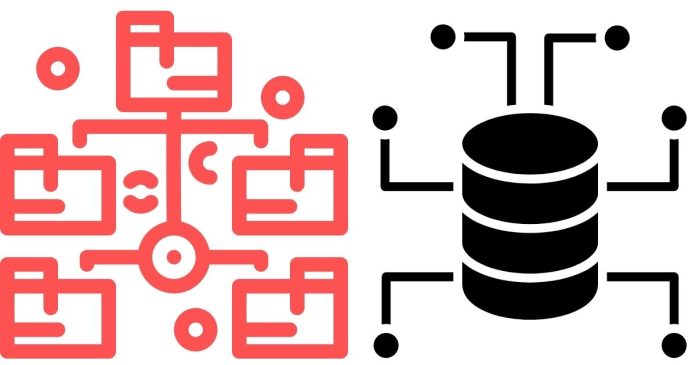In programming, data structures are essential for organizing and storing data efficiently. Understanding the distinction between primitive and non-primitive data structures is crucial for choosing the right one for different tasks. Both types of data structures serve distinct purposes and have their own advantages. Whether you’re dealing with basic variables or more complex datasets, knowing how to categorize and apply these structures will help improve the efficiency and performance of your code.
In this blog post, we will explore the differences between primitive and non-primitive data structures, their features, and when to use them.
1. What Are Primitive Data Structures?
Primitive data structures are the simplest form of data structures. They are the building blocks of all other data structures and are directly supported by most programming languages. These data types represent single, indivisible values and are typically predefined in the language.
Key Features of Primitive Data Structures:
- Simplicity: Primitive data structures store simple data types, like numbers or characters.
- Direct Mapping to Memory: These structures directly correspond to memory locations, making them fast to access.
- Fixed Size: The size of primitive data types is predetermined and does not change during program execution.
- Basic Operations: Operations on primitive types are usually limited to simple mathematical or logical operations.
Examples of Primitive Data Structures:
- Integer (int): Stores whole numbers.
- Floating Point (float, double): Stores numbers with decimal points.
- Character (char): Stores single characters like ‘a’, ‘b’, or ‘c’.
- Boolean (bool): Stores true or false values.
These primitive types are fundamental in most programming languages and form the foundation for creating more complex data structures.
2. What Are Non-Primitive Data Structures?
Non-primitive data structures are more complex and can store collections of data. Unlike primitive types, which hold only a single value, non-primitive data structures are used to store multiple values or even complex data in a structured manner. Non-primitive data structures are generally derived from primitive data structures and allow for the storage of large, organized datasets.
Key Features of Non-Primitive Data Structures:
- Complexity: Non-primitive data structures can store multiple values of different data types.
- Dynamic Size: Unlike primitive types, non-primitive data structures can grow or shrink dynamically, depending on the requirements.
- More Operations: They support a variety of operations, like sorting, searching, insertion, and deletion.
- Customizability: Non-primitive structures allow for more flexibility in how data is stored and accessed.
Examples of Non-Primitive Data Structures:
- Arrays: A collection of elements of the same data type, stored in contiguous memory locations.
- Linked Lists: A linear data structure where each element (node) contains data and a reference (link) to the next node in the sequence.
- Stacks: A collection of elements that follows the Last In First Out (LIFO) principle, where the last element inserted is the first to be removed.
- Queues: A collection of elements that follows the First In First Out (FIFO) principle, where the first element inserted is the first to be removed.
- Trees: A hierarchical data structure where each node has a value and a list of references to other nodes (children).
- Graphs: A collection of nodes (vertices) connected by edges, used to represent relationships between entities.
- Hash Tables: A data structure that stores data in key-value pairs, allowing for fast access based on a key.
3. Key Differences Between Primitive and Non-Primitive Data Structures
| Feature | Primitive Data Structures | Non-Primitive Data Structures |
|---|---|---|
| Complexity | Simple and basic | More complex, capable of storing multiple values |
| Memory Allocation | Fixed size, directly corresponds to memory | Dynamic size, can change in size depending on the structure used |
| Data Type | Stores a single value | Stores collections of values or more complex data |
| Examples | int, float, char, boolean | Arrays, Linked Lists, Stacks, Queues, Trees, Graphs, Hash Tables |
| Operations | Limited to simple operations (arithmetic, logical) | Supports more complex operations (sorting, searching, insertion) |
| Implementation | Supported directly by programming languages | Built using primitive data types, often requires custom code |
| Usage | Basic computations, individual data storage | Storing large datasets, organizing data, supporting complex algorithms |
4. When to Use Primitive vs Non-Primitive Data Structures?
- Use Primitive Data Structures when you need to store simple values such as numbers or characters. These are ideal for basic operations where efficiency and speed are crucial, such as in simple arithmetic calculations, boolean logic, or controlling flow in programs.
Example Use Case: Storing a person’s age, a product price, or a flag for a boolean condition.
- Use Non-Primitive Data Structures when you need to manage more complex data or handle large datasets. These structures are ideal when your data requires organization or relationships between different elements, such as when building a database, handling hierarchical data, or implementing search algorithms.
Example Use Case: Representing a social network with people (nodes) and relationships (edges), managing a collection of products in a shopping cart, or implementing a priority queue for scheduling tasks.
5. Conclusion
Understanding the difference between primitive and non-primitive data structures is essential for any programmer. Primitive data structures are fast and efficient for simple tasks, whereas non-primitive structures provide flexibility and power for handling complex, large-scale data. By choosing the appropriate data structure, you can optimize your code, improve performance, and effectively solve problems that involve data management.
As you progress in programming, mastering both primitive and non-primitive data structures will become an essential skill for building efficient and scalable applications.


